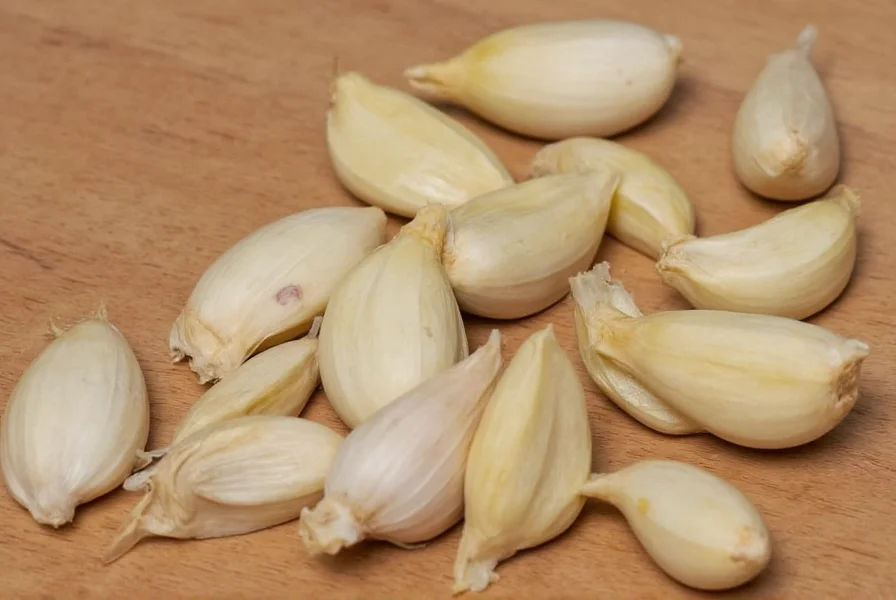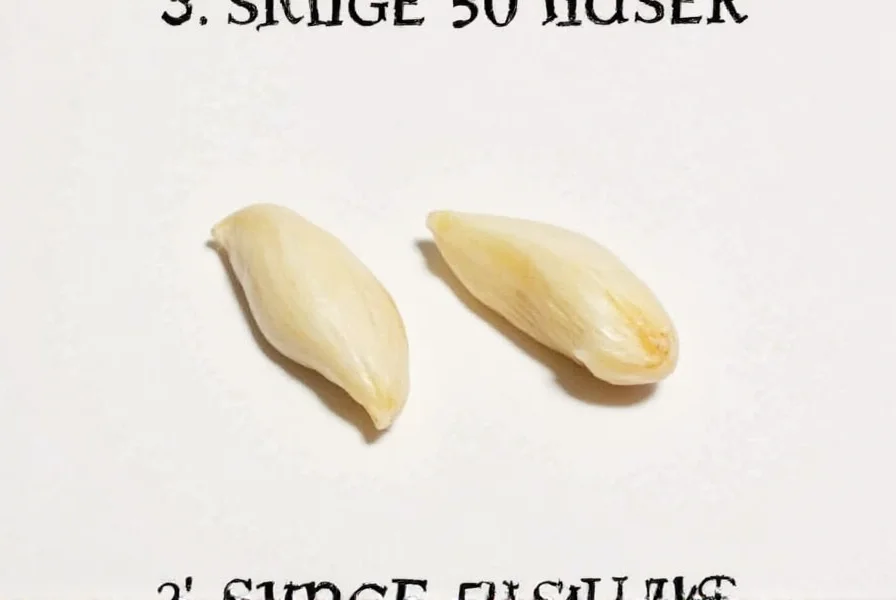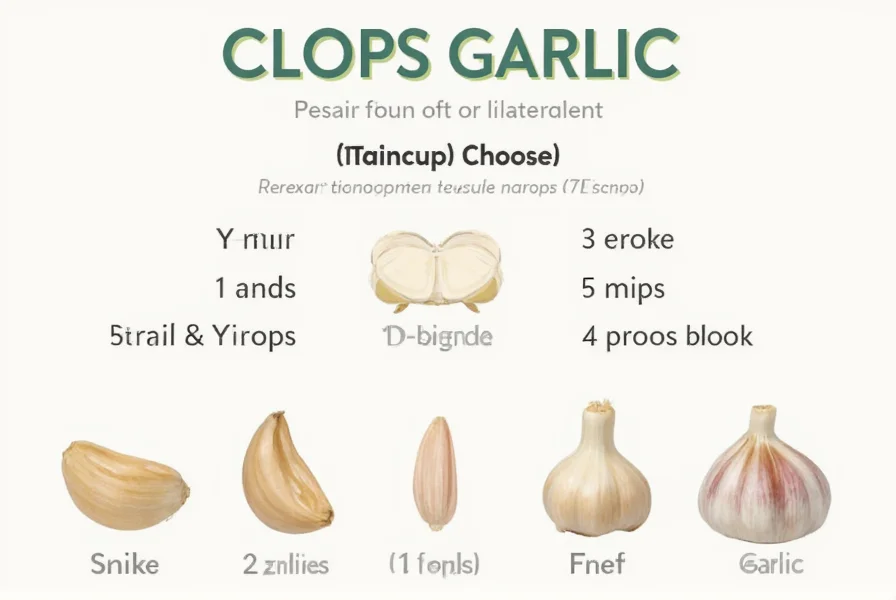Understanding precise garlic measurements transforms your cooking experience. When recipes specify 2 cloves garlic, you're working with a fundamental building block of flavor that impacts everything from Mediterranean dishes to Asian stir-fries. This guide provides professional kitchen insights you won't find in standard conversion charts.
What Exactly Are 2 Cloves of Garlic?
A single garlic clove represents one segment from a whole garlic bulb. Two medium cloves typically measure:
| Measurement Type | Equivalent for 2 Cloves |
|---|---|
| Minced garlic | 1 teaspoon (5 mL) |
| Chopped garlic | 1 tablespoon (15 mL) |
| Garlic powder | 1/4 teaspoon (1.25 mL) |
| Garlic salt | 1/2 teaspoon (2.5 mL) |
| Weight (fresh) | 6-14 grams |
These measurements assume medium-sized cloves (about 1 inch long and 1/2 inch in diameter). Garlic size varies significantly between varieties - elephant garlic cloves can be three times larger than standard supermarket garlic.

Practical Applications in Cooking
Professional chefs understand that how you prepare 2 cloves garlic dramatically affects flavor release. When recipes specify this quantity, they're counting on specific chemical reactions:
- Raw application: Crushed garlic provides maximum allicin (the compound responsible for garlic's health benefits) but can be harsh in dressings
- Sautéed garlic: Cooking 2 cloves in oil for 1-2 minutes creates nutty sweetness without bitterness
- Roasted garlic: Whole cloves roasted until soft yield a caramelized spread perfect for bread or mashed potatoes
The timing of garlic addition matters significantly. Adding 2 cloves garlic to tomato sauce at the beginning creates a subtle background note, while adding near the end preserves sharper flavor.
Substitution Guide for 2 Cloves Garlic
When fresh garlic isn't available, these substitutions maintain recipe integrity:
- Garlic powder: Use 1/4 teaspoon - ideal for rubs and dry marinades where moisture isn't desirable
- Granulated garlic: Substitute 1/2 teaspoon - dissolves better in liquids than powder
- Pre-minced garlic: Replace with 3/4 teaspoon - contains citric acid that slightly alters flavor
- Garlic paste: Use 1/2 teaspoon - convenient but often overpowers dishes
For 2 cloves garlic in Italian recipes, fresh remains superior, but garlic powder works acceptably in tomato-based sauces. Asian cuisine typically demands fresh garlic for authentic flavor profiles.

Health Benefits of Consuming 2 Cloves Daily
Research shows that consuming approximately 2 cloves garlic per day provides measurable health benefits without causing digestive discomfort for most people:
- Supports cardiovascular health through allicin's blood pressure regulating effects
- Provides natural antimicrobial properties that support immune function
- Contains antioxidants that combat oxidative stress
- May improve bone health through organosulfur compounds
For maximum benefit, crush or chop the garlic and let it sit for 10 minutes before cooking to activate allicin formation. Consuming 2 cloves raw garlic benefits exceed cooked versions, but may cause heartburn in sensitive individuals.
Avoiding Common Garlic Mistakes
Even experienced cooks make these errors with 2 cloves garlic measurements:
- Burning garlic: Cooking beyond 350°F creates bitter compounds - keep oil temperature moderate
- Incorrect chopping: Fine mincing releases more allicin than rough chopping
- Poor storage: Refrigerated peeled cloves last only 2-3 days versus 3-6 months for whole bulbs
- Ignoring variety differences: Rocambole garlic has more complex flavor than supermarket varieties
When recipes specify 2 cloves garlic minced vs chopped, they're controlling flavor intensity. Minced releases approximately 30% more flavor compounds than chopped.
Frequently Asked Questions
How much minced garlic equals 2 cloves?
Two medium garlic cloves yield approximately 1 teaspoon of minced garlic. This measurement assumes standard supermarket garlic cloves that are about 1 inch long and 1/2 inch in diameter. Larger cloves may produce up to 1.5 teaspoons when minced.
Can I substitute garlic powder for 2 cloves of fresh garlic?
Yes, substitute 1/4 teaspoon of garlic powder for 2 fresh cloves. Remember that garlic powder has concentrated flavor, so start with less and adjust to taste. This substitution works best in cooked dishes like soups, stews, and sauces where the powder can fully dissolve.
How many grams are 2 cloves of garlic?
Two medium garlic cloves typically weigh between 6-14 grams, depending on size and variety. Standard supermarket cloves average 3-7 grams each. For precise baking or scientific applications, weighing provides more accuracy than volume measurements.
What happens if I use too much garlic in a recipe?
Using excessive garlic (more than 4 cloves where 2 are called for) can overwhelm other flavors, create bitterness when cooked, and cause digestive discomfort. If you've added too much, balance with acid (lemon juice or vinegar), sweetness (a pinch of sugar), or dairy (yogurt or cream) to mellow the garlic flavor.
How should I store unused garlic cloves?
Store whole garlic bulbs in a cool, dark, well-ventilated place (not the refrigerator). Peeled cloves can be kept in an airtight container in the refrigerator for 2-3 days. For longer storage, submerge peeled cloves in olive oil and refrigerate for up to 1 week, or freeze whole cloves for up to 6 months.











 浙公网安备
33010002000092号
浙公网安备
33010002000092号 浙B2-20120091-4
浙B2-20120091-4